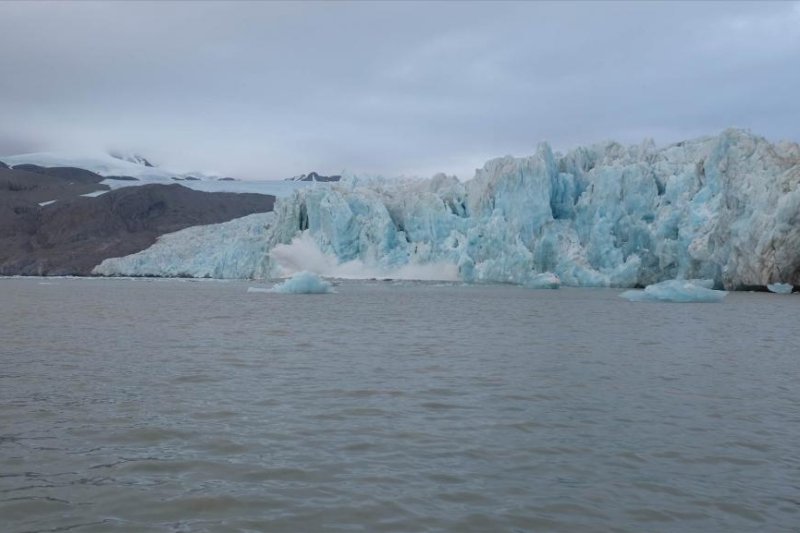Glaciers along the west coast of Sweden's Svalbard islands have been calving at an accelerated rate over the last several years. Photo by Nina Kirchner/Stockholm University
July 1 (UPI) -- New research has confirmed the primary driver of glacier calving, but analysis showed the effects of subsurface water temperatures aren't as influential as previously thought.
The new findings -- published this week in the journal Scientific Reports -- offered glaciologists fresh insights into the relationship between water temperatures and glacial stability.
Over the last decade, glacial calving rates along the west coast of Svalbard, a Norwegian archipelago in the Arctic Ocean, have dramatically increased. To better understand what's destabilizing the islands' coastal glaciers, scientists recorded ocean temperature data from several locations.
The data showed, as expected, that subsurface water temperatures are the primary driver of calving. However, the influence of subsurface temps wasn't as influential as previous models predicted.
Other factors, including surface water temperatures and air temperatures, as well as a glacier's structural integrity, influence calving rates.
"One of the greatest uncertainties surrounding future sea level rise is how glacier dynamics change when glaciers come into contact with warming waters," Felicity Holmes, a Ph.D. student at Stockholm University, said in a news release. "Our measurements and results can be used to improve numerical models which estimate future sea level rise."
Glaciers and ice sheets lose the majority of their mass through melting. But calving also plays an important role in the loss of ice mass. Calving can destabilize glaciers, opening up a glacier's interior to warm water and accelerated melting.
"Calving is a process which is not completely understood, but with the measurement technology that we used in Svalbard, we have a good opportunity to increase our knowledge of which factors interact when glaciers calve," said Nina Kirchner, a professor of glaciology at Stockholm University. "A better understanding of calving processes also benefits prognoses of how glaciers in West Antarctica will react to warming waters."
Predicting the effects of water temperatures and currents on coastal glaciers has been made difficult by a lack of precise data. To improve models, scientists used a variety of buoyed sensors to collect water temperature data in the fjords where the ocean and coastal glaciers meet.
"We are proud of the unique measurements that we could collect in close proximity to the glacier fronts over the course of a whole year -- the measurement series is now openly available to other researchers to use," said Holmes.















